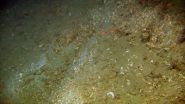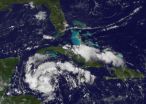Molecule identified that increases survival of stomach cancer patients
2010-09-14
(Press-News.org) "The high presence of microRNA 451 enhances the response to treatment with chemo-radiotherapy and increases the survival of patients with stomach cancer", explained Dr. Jesús García-Foncillas, chief researcher of the Pharmacogenomics Laboratory at the Applied Medical Research Centre (CIMA) and Director of Oncology at the University Hospital of Navarra. This was one of the results presented at the IV Congress of the Spanish Society for Pharmacogenetics and Pharmacogenomic, recently held at CIMA.
Pharmacogenetics studies the genetic bases determining the response of an individual to treatment, as well as possible toxic reactions; pharmacogenomics analyses the molecular and biological mechanisms involved in a disease in order to develop new medicines. "We know that variations in small molecules (microRNAs) give rise to different responses to the same pharmaceutical drug. In this line, a number of approaches are being made in clinical practice, such as the study of mutations of the K-RAS gene in cancer of the colon or of the EGFR in lung cancer, and which enable directing individualised treatment for each patient".
The study presented at this scientific meeting analysed the role of microRNA 451 in stomach cancer, "Patients with a high expression of this molecule show greater survival rates, and so could be a biomarker for treatment response". The CIMA researchers are also taking part in other trials, such as studies with the 192 and 215 microRNAs, which influence the response to pharmaceutical drugs against cancer of the colon, at the preclinical phase.
Psychiatric and cardiovascular diseases
Besides its application in cancer, pharmacogenetics is demonstrating its efficacy in other disciplines such as psychiatry. So today, more individualised treatment can be determined for psychotic disorders and epilepsy for each patient.
Another field that is growing fast is that involving the treatment of cardiovascular diseases. "One of the great risks of these illnesses is controlling the thrombotic processes involved in cerebrovascular accidents. The study of certain genes, such as ALOX5AP, can direct the most appropriate medication for each patient", explained Dr. García-Foncillas.
In the opinion of the CIMA researcher, "the convergence of genetic and pharmacological studies has created a way for optimising both the treatment for each patient as well as health resources, given that we will be able to use pharmaceutical drugs in suitable doses, with fewer side effects and with patients that show better therapeutic response".
INFORMATION:
END
ELSE PRESS RELEASES FROM THIS DATE:
2010-09-14
NARRAGANSETT, R.I. – September 14, 2010 – When a federal fisheries scientist sought to learn how ocean currents affect the catch rate of lobsters, he turned to a University of Rhode Island oceanographer who had developed an innovative and inexpensive meter for measuring currents near the bottom of bays, rivers and other shallow waters.
So did aquaculture farmers in Rhode Island looking to identify the best site for farming oysters, Cape Cod officials interested in understanding tidal fluctuations in Waquoit Bay, and students at Cohasset (Mass.) High School studying circulation ...
2010-09-14
Suppose a close friend who is trying to figure out the facts about climate change asks whether you think a scientist who has written a book on the topic is a knowledgeable and trustworthy expert. You see from the dust jacket that the author received a Ph.D. in a pertinent field from a major university, is on the faculty at another one, and is a member of the National Academy of Sciences. Would you advise your friend that the scientist seems like an "expert"?
If you are like most people, the answer is likely to be, "it depends." What it depends on, a recent study found, ...
2010-09-14
WASHINGTON, Sept. 14, 2010 — A new genre of construction materials, made with particles barely 1/50,000th the width of a human hair, is about to play a big role in the building of homes, offices, bridges, and other structures, according to the latest episode in the American Chemical Society's (ACS) award-winning podcast series, "Global Challenges/Chemistry Solutions."
A new Global Challenges podcast and website is highlighting both the potential benefits of these nanomaterials in improving construction materials and the need for guidelines to regulate their use and ...
2010-09-14
The first randomized, placebo-controlled U.S. clinical trial to assess the use of bone marrow-derived mononuclear cells (BMC) in patients after a ST-elevation myocardial infarction (STEMI; severe heart attack) demonstrated a strong safety profile for this cell therapy, based on phase 1 results published in the September issue of the American Heart Journal.
"The use of adult stem cells, derived from the patient's own bone marrow, presents a potential new type of therapy to benefit individuals after they suffer a heart attack," says the study's principal investigator Jay ...
2010-09-14
EAST LANSING, Mich. — Women tend to believe the scientific consensus on global warming more than men, according to a study by a Michigan State University researcher.
The findings, published in the September issue of the journal Population and Environment, challenge common perceptions that men are more scientifically literate, said sociologist Aaron M. McCright.
"Men still claim they have a better understanding of global warming than women, even though women's beliefs align much more closely with the scientific consensus," said McCright, an associate professor with ...
2010-09-14
The research, unveiled at a press conference today (14 September 2010), shows that the watercress compound is able to interfere with the function of a protein which plays a critical role in cancer development.
As tumours develop they rapidly outgrow their existing blood supply so they send out signals which make surrounding normal tissues grow new blood vessels into the tumour which feed them oxygen and nutrients.
The research, led by Professor Graham Packham of the University of Southampton, shows that the plant compound (called phenylethyl isothiocyanate) found ...
2010-09-14
(PHILADELPHIA) An abrupt, fatal heart attack in a young athlete on the playing field is a tragedy destined to repeat itself over and over until more is understood about hypertrophic cardiomyopathy (HCM), a genetic disorder that is the most common cause of sudden death in young people but which affects people of all ages. So says a task force of cardiologists and cardiac biologists, headed by Thomas L. Force, M.D., James C. Wilson Professor of Medicine at Thomas Jefferson University, in the September 14th online edition of the journal Circulation.
Their special report ...
2010-09-14
Scientists have for the first time estimated the physical footprint of human activities on the deep seafloor of the North East Atlantic. The findings published in the journal PLoS ONE reveal that the area disturbed by bottom trawling commercial fishing fleets exceeds the combined physical footprint of other major human activities considered.
The deep seafloor covers approximately 60% of Earth's surface, but only a tiny fraction of it has been studied to date. Yet as technology advances and resources from relatively shallow marine environments are depleted, human impacts ...
2010-09-14
Global fisheries, a vital source of food and revenue throughout the world, contribute between US$225-$240 billion per year to the worldwide economy, according to four new studies released today. Researchers also concluded that healthier fisheries could have prevented malnourishment in nearly 20 million people in poorer countries.
This first comprehensive, peer-reviewed estimate of the global economic contribution of fisheries was published online today in four papers as part of a special issue of the Journal of Bioeconomics.
This research, conducted by the University ...
2010-09-14
GOES-13 captured a look at System 92L this morning as it continues moving through the central Caribbean, and it's looking more and more like a tropical depression.
As the Geostationary Operational Environmental Satellite called GOES-13 satellite keeps relaying data to NOAA (who manages the satellite) and the NASA GOES Project at NASA's Goddard Space Flight Center in Greenbelt, Md., the images created by the NASA GOES Project reveal that System 92L appears to be taking on the appearance of a tropical depression. In the imagery captured today, Sept. 14 at 1340 UTC (9:40 ...
LAST 30 PRESS RELEASES:
[Press-News.org] Molecule identified that increases survival of stomach cancer patients



